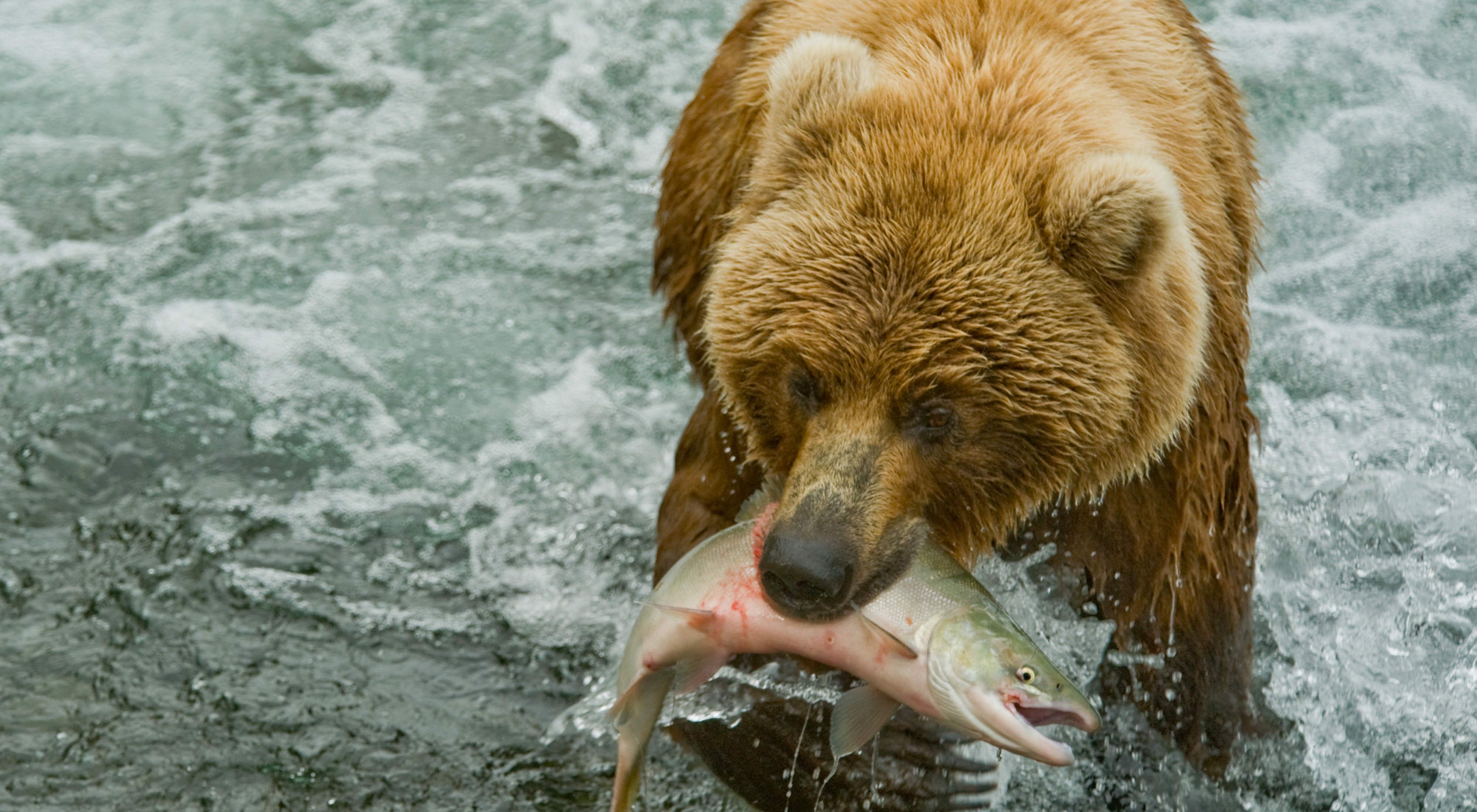In Alaska, everything runs on wild salmon. We spoke to Conservancy scientist Colin Shanley about how Alaskans are helping their favorite fish. Here are five top ways.
1. We’re Speaking Up
“You can’t go anywhere in Alaska without people talking about wild salmon. This summer a friend’s band opened for a new music festival entirely dedicated to salmon and salmon conservation called Salmonfest.”
2. We’re Eating Them
“There’s a bumper sticker that’s been around the state for a while that crosses all party lines. It says, ‘do your part to save wild salmon: eat one’. Someone always knows someone who’s a fisherman, and everyone knows the best way to support wild salmon and sustainable fishing is with their fork.”
3. We’re Learning
“During one field season I spent a week doing stream surveys with the Bristol Bay Heritage Land Trust. In just one day on the ground, we mapped at least a half a dozen new major tributaries in the Bristol Bay watershed full of spawning sockeye salmon. It’s amazing how much salmon habitat hasn’t even been documented yet!”
4. We’re Restoring Their Streams
“On Prince of Wales Island in Alaska’s Tongass, a heavy equipment operator can get a job restoring salmon streams. Old logging practices harmed some streams and now we’re making things right. Our latest salmon research also suggests restoration could help with climate change.”
5. We’re Restoring Their Rainforest
“Salmon need big trees to stabilize their river banks, shade their pools, and provide cover to hide. We’re building relationships to help forests and fish. For instance, we're a founding member of the innovative Hoonah Native Forest Partnership, which gives local people a forum to chart the future of the forest.”
Wondering how you can help? Here’s a simple way to start: Join The Nature Conservancy in Alaska and help us protect nature for people and wildlife. Then, spread the word! Share this article on Facebook.
